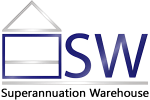- Home
- SMSF Setup
- Running SMSF
- Transferring Benefits into your SMSF
- Income in an SMSF
- Expenses in an SMSF
- Bank Accounts
- Insurance
- Members
- Unlock Growth Potential with SMSF Contributions
- Personal Super Contributions
- Government Co-contribution
- Low Income Super Tax Offset
- Spouse super contribution
- Contribution Splitting
- Personal Concessional Contribution
- Small Business Exemptions
- Concessional Contributions
- Non-Concessional Contributions
- Salary Sacrifice
- Carry Forward Concessional Contributions
- Bring-Forward Non-Concessional Contributions
- First Home Super Saver Scheme
- Downsizer Contributions Into Superannuation
- Pensions
- Estate Planning
- Guide to SMSF
- Reserves
- Advice
- NIL SMSF Returns
- Closing down an SMSF
- Services
- Investments
- SMSF Audit
- About Us
- Resources
- Single Member SMSFs
- Residency Rules
- Education
- Power of Attorney (POA)
- Illegal access to Super
- Foreign Account Tax Compliance Act (FATCA)
- Financial Advice
- Robo Advice
There are two types of taxable income: income of a revenue nature and income of a capital nature. Note that capital losses can’t be offset against revenue gains for the calculation of taxable income. Capital losses are quarantined and can only be utilised against capital gains.
When an SMSF goes into pension mode, all gains become tax free. So the Fund won’t pay any tax on its SMSF income. Moving into a tax free environment is one of the main objectives of an SMSF.
An SMSF bought BHP shares at $10 per share. If the SMSF keeps these until the retirement phase and sells the shares for $45 each, the total gain of $35 per share will be tax free.
Question: My SMSF has $10,000 from bank interests but the SMSF investment portfolio (shares) is down about $4,000. Can the SMSF offset losses from the portfolio against the bank interests if the SMSF sells the shares?
Short answer: NO. Shares are held on capital account and losses on capital account will be quarantined. Only capital gains can be applied against these losses. Interest is of a revenue nature and will be taxed at 15%. Expenses that can be offset against this cannot be of a capital nature. You can deduct bank fees, accounting and auditing costs.
Annual Taxation Returns
If you are a client of Superannuation Warehouse we act as your Tax Agent and complete and submit your SMSF tax return. If your SMSF uses a registered Tax Agent like Superannuation Warehouse, the SMSF gets an extension to submit its tax return. The Tax Return is generally due 15 May the following calendar year, i.e. 10.5 months after the year end.
For a copy of SMSF annual returns and instructions on how to complete the tax return for recent years, click on the links below.
- SMSF 2023 return and 2023 Annual Return instructions
- SMSF 2022 return and 2022 Annual Return instructions
- SMSF 2021 return and 2021 Annual Return instructions
- SMSF 2020 return and 2020 Annual Return instructions
- SMSF 2019 return and 2019 Annual Return instructions
- SMSF 2018 return and 2018 Annual Return instructions
- SMSF 2017 return
- SMSF 2016 return
- SMSF 2015 return
- SMSF 2014 return and 2014 Annual Return instructions
- SMSF 2013 return and 2013 Annual Return instructions
- SMSF 2012 return and 2012 Annual Return instructions
- SMSF 2011 return and 2011 Annual Return instructions
- SMSF 2010 return and 2010 Annual Return instructions
SMSF Supervisory Levy
There is a fee payable by all SMSF’s on an annual basis called the Supervisory Levy. This fee is payable to the ATO and it enables them to perform their function as a regulator. We have a page discussing the SMSF Supervisory Levy in more detail.
Nil Tax Returns
Previously the ATO allowed SMSF’s to lodge a Return Not Necessary (RNN) if no assets were held in the SMSF.
This exception for first year lodgments has been removed from 1 January 2015. All new SMSFs registered on or after 1 January 2015 must lodge an SMSF annual return.
This change ties in with the introduction of the ABN entitlement tool. RNNs will no longer be granted as ALL funds must hold assets before they can register for an ABN.
If, however, an SMSF was registered before 1 January 2015, it is acknowledged that some Funds may have been set up without assets. On the provision that certain criteria are met, a RNN may be applied for the 2015 financial year only if the SMSF meets all the following conditions:
- Was registered in the 2014-15 financial year;
- Was not legally established by 30 June 2015;
- Had not received contributions or rollover amounts by 30 June 2015; and
- Has received contributions by the date of the request for a RNN.
Transferring funds from the retail fund to your SMSF is basically not a tax-avoiding strategy. For more information on tax-avoidance schemes, please see here.
Alternatively the SMSF can ask to have the SMSF’s registration cancelled and re-register once assets are set aside for the Fund.
SMSF’s are required to lodge a tax return on an annual basis to keep the Fund compliant with the ATO. For more information on the required supporting documents for your Annual Returns, please click here.
Have Questions?
Ask Superannuation Warehouse experts
We are Melbourne based with clients throughout Australia. Our SMSF administration service is mostly paperless. This enable us to charge a fair fee, resulting in a good value-proposition for you.
Superannuation Warehouse is an accounting firm and do not provide financial advice. All information provided has been prepared without taking into account any of the Trustees’ objectives, financial situation or needs. Because of that, Trustees are advised to consider their own circumstances before engaging our services.
Follow us:
Shop 1/116 Balcombe Rd, Mentone, VIC 3194
03 9583 9813 or 0411 241 215
admin@superannuationwarehouse.com.au




